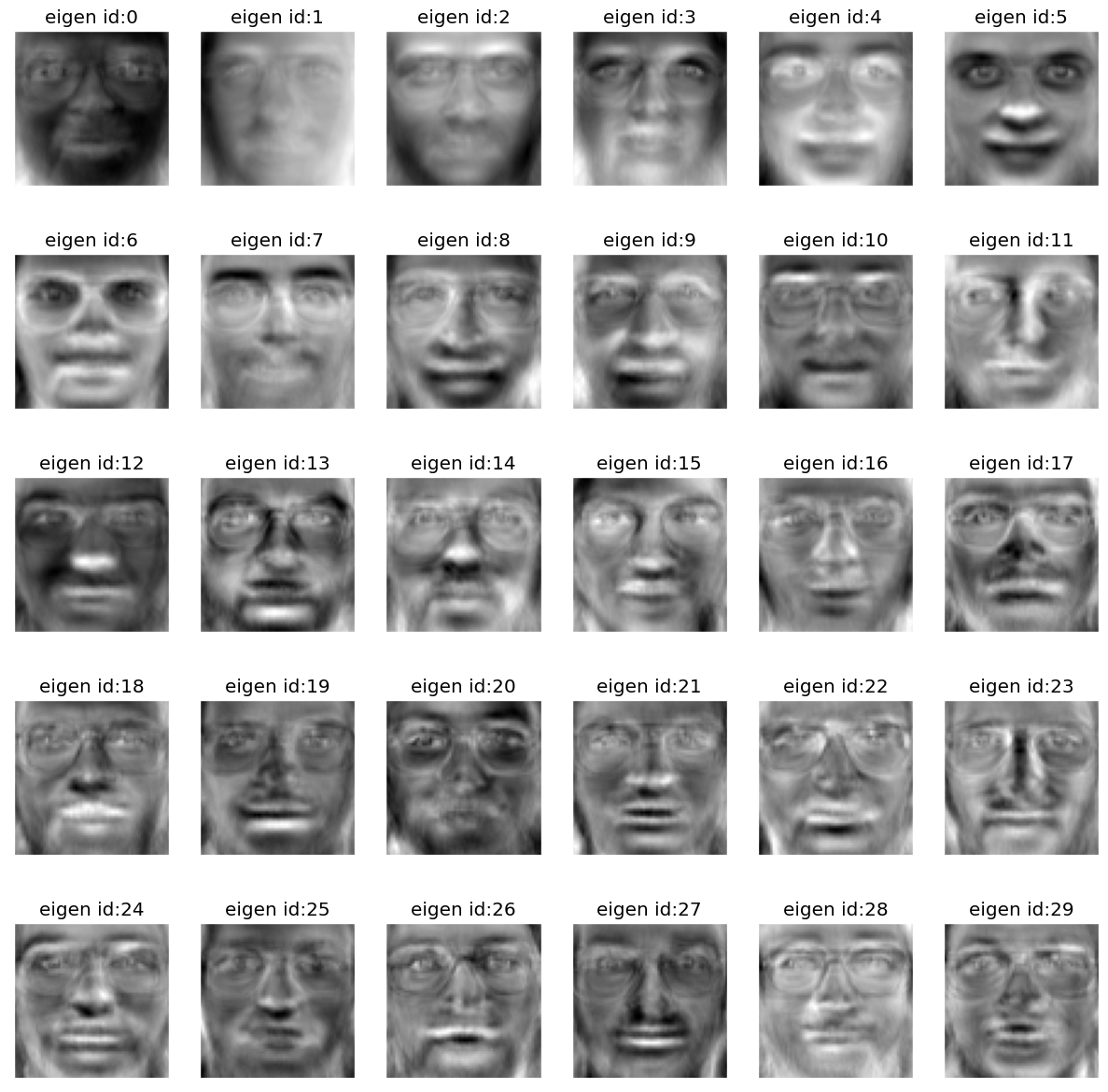Face Recognition
Face recognition using Eigen faces, PCA and support vector machines
We are going to build a classifier (Face recognition using Eigen faces, PCA and support vector machines) to distinguish the faces of 40 people on a toy dataset. The dataset includes 400 pictures of 40 people faces, each by a 64*64 pixel picture.

Code Explanation
Dataset and Visualization:
- The dataset consists of 400 pictures of 40 people’s faces, each represented by a 64x64 pixel image.
- The code visualizes the first image of each class (person) using subplots.
Train-Test Split:
- The data is split into train and test sets with a 70% train and 30% test split.
- Dimensions of the sets are printed.
Dimensionality Reduction (PCA):
- Principal Component Analysis (PCA) is used to reduce dimensionality.
- The number of components is chosen to keep 90% variance.
- Scree plot shows the proportion of variance explained by each component.
Eigenfaces Visualization:
- Eigenfaces are the top eigenvectors from PCA.
- The first 30 eigenfaces are plotted, showing facial features.

Transforming Data with PCA:
- Train and test features are transformed using PCA.
SVM Classifier Training:
- An SVM classifier is trained on the transformed data.
- Grid search is used for hyperparameter tuning.
Model Evaluation:
- Model predictions are checked on test samples.
- Precision-Recall tradeoff is visualized.
- Decision threshold where recall equals precision is determined.
ROC/AUC Comparison:
- A Random Forest classifier with 30 estimators is trained.
- ROC curve and AUC are calculated for both SVM and Random Forest.
- SVM has an AUC of 0.98, indicating good performance.
Classification Report and Confusion Matrix:
- Classification report shows precision, recall, and F1-score for each class.
- Confusion matrix visualizes true/false classifications per class.